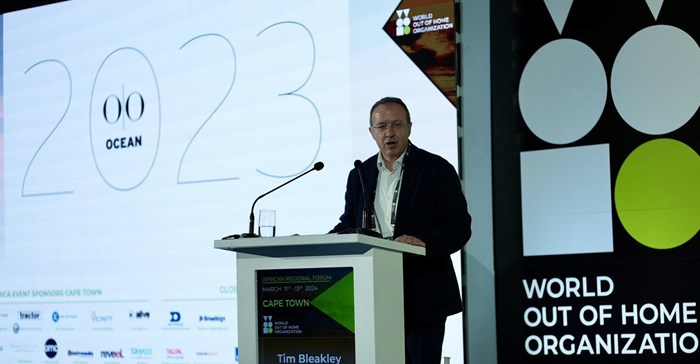Tim Bleakley, CEO of Ocean Outdoor Group, emphasised the importance of measurement at the World Out of Home Organization Forum in South Africa this week. He said that original research studies have shown that "not all impacts are created equal."

Tim Bleakley in South Africa. Source: Supplied.
neuroscience based studies led by Ocean demonstrate how the emotional response to large format OOH, and full motion in particular, correlates with memory encoding and brand recall. It has also established that not all impacts are the same and that’s a particularly important message to take to agencies and specialists.”
Perfect conditions
Bleakley outlined the perfect conditions for investment and growth in the DOOH sector in sub-Saharan Africa, fuelled by a 62% growth in urban populations over the last decade, double the number of younger audiences (50% are under 25) compared to Europe (25%) and the mass adoption of mobile devices (483 million).
“Together these three factors not only facilitate sector growth but create a channel of connectivity and engagement between DOOH and younger audiences, creating the ideal conditions to gather audience and data insights.”
He added that while rising OOH audiences and better product was a given, in recent years OOH had been unable to keep pace with the explosion of digital channels.
But he pointed to “significant headwinds around issues about trust, ad-fraud, audience and environment” which were having an impact on other media, saying too much focus on short term marketing performance marketing would cost advertisers down the line.
Change discourse
He suggested it was time to move the discourse away from OOH’s share of the ad market and towards growing total ad dollars.
“It’s not that surprising that in recent years OOH has failed to grow share, but there are plenty reasons why it should. It’s our belief there will be a reappraisal of OOH in the media mix and that market share will rise accordingly.
“We’re already seeing this from clients and media agencies. We often hear planners and buyers talking about the attention economy and the quality of an engagement. This is a sound approach and one which will gain traction.”
Bleakley said OOH budgets were being buoyed by creativity and the switch from 2D to 3D formats which had fundamentally changed the way brands think about OOH, leading to double digit growth in some categories.
The turning of digital out of home (DOOH) into an accessible, entertainment channel with experiences that can be shared beyond the physical realm was attracting brands such as Heinz, Arla and Balenciaga to locations they may not have previously considered.
“Let’s not forget that OOH is and always will be a one-to-many medium. Maybe that’s been unfashionable over the last decade of hyper-targeting and personalisation, but it’s not a hindrance – it’s a superpower. There is a real value in talking to everyone in a community at the same time in the same way and OOH needs to celebrate these opportunities,” he said.

































